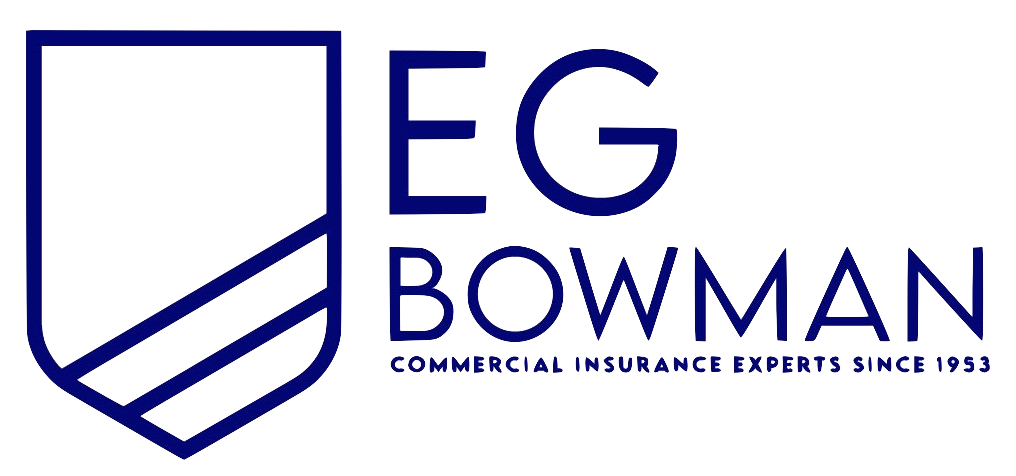New York Directors and Officers Liability Insurance
See How We're Different:
or Call Us: 212-425-8150

Most Common Business Policies
Index
Contact Us
Directors and officers (D&O) liability insurance protects the personal assets of corporate directors and officers, as well as the financial well-being of the corporation itself. This type of insurance is essential for anyone involved in the management of a company, as it covers legal fees, settlements, and other costs that can arise from lawsuits or claims related to their management decisions. In this article, we will explore the intricate details of D&O insurance in New York, covering everything from its significance to the regulations that govern it.
Understanding Directors and Officers Liability Insurance
Directors and Officers Liability Insurance is designed to provide coverage for the personal liabilities of company leaders arising from their actions while managing the organization. This insurance serves as a safeguard against potential claims by shareholders, customers, and other third parties.
Definition and Importance of D&O Insurance
D&O insurance provides essential protection for board members and corporate officers. As they make critical decisions for their companies, they face various risks, including allegations of wrongful acts such as mismanagement, breach of fiduciary duty, or inadequate disclosures. Having D&O coverage is vital not only for protecting individual assets but also for ensuring that the organization can attract and retain talented leaders.
The insurance covers both defense costs and any settlements arising from lawsuits, which can save individuals and organizations from potentially devastating financial impacts. In today’s litigious environment, this coverage is more crucial than ever. With the increasing scrutiny on corporate governance and the rising number of shareholder lawsuits, the importance of D&O insurance cannot be overstated. It not only provides peace of mind but also fosters a culture of accountability and ethical decision-making within organizations.
Key Features of D&O Insurance
D&O insurance typically includes several key features that enhance protection for directors and officers:
- Coverage for all directors and officers: This includes not only current leaders but also past individuals who may face claims related to their tenure.
- Advancement of defense costs: Most policies will cover legal defense expenses as they arise, rather than waiting for a final judgment.
- Protection against various claims: This can include claims by regulators, shareholders, employees, and other parties.
Understanding these features is crucial for business leaders to ensure they have adequate coverage tailored to their needs. Additionally, many policies offer endorsements that can extend coverage to include employment practices liability, which protects against claims related to wrongful termination, discrimination, and harassment. This is particularly relevant in today’s workplace, where issues of diversity, equity, and inclusion are at the forefront of corporate responsibility. By recognizing the evolving landscape of risks, organizations can better prepare themselves and their leaders to navigate potential challenges.
Furthermore, the underwriting process for D&O insurance often involves a thorough assessment of the company's risk profile, including its financial health, industry sector, and governance practices. Insurers may also consider the company's history of claims and the experience of its leadership team. This comprehensive evaluation helps in determining the appropriate coverage limits and premiums. As such, organizations should engage in proactive risk management strategies and maintain transparent communication with their insurers to ensure that their D&O policy remains relevant and effective in addressing the unique challenges they face.

New York State Regulations for D&O Insurance
In New York, the regulatory landscape for D&O insurance is shaped by state laws and requirements that ensure fair practices and adequate consumer protection.
State-Specific Requirements
New York requires that all insurance providers operating within the state comply with specific regulations regarding D&O coverage. These regulations are designed to ensure that policies are clear and comprehensive, protecting both policyholders and the public.
Insurers must provide a clear explanation of policy coverage, limits, and conditions, facilitating informed decisions by business leaders. Additionally, the New York Department of Financial Services monitors insurance companies to maintain compliance with the state's laws. This oversight includes regular audits and reviews of policy forms to ensure they meet the necessary standards, thus safeguarding the interests of policyholders.
Moreover, New York mandates that insurers disclose any exclusions or limitations in their policies, ensuring that executives are fully aware of the scope of their coverage. This transparency is vital, as it helps mitigate potential disputes that could arise during claims processing, fostering a more trusting relationship between insurers and their clients.
Compliance and Penalties
Failure to comply with state regulations can lead to significant penalties for insurance providers, including fines or revocation of licenses. Policyholders should remain informed about these regulations, as they can affect the availability and cost of D&O insurance.
Understanding state compliance is crucial, as it directly impacts how coverage is designed and implemented within New York companies. In instances where insurers fail to adhere to these regulations, not only can they face financial repercussions, but they may also suffer reputational damage that can affect their standing in the industry. This creates a ripple effect, as companies may become hesitant to engage with non-compliant insurers, ultimately influencing market dynamics and consumer choices.
Furthermore, New York's regulatory framework encourages insurers to adopt best practices in risk management and corporate governance. By fostering a culture of compliance, the state aims to enhance the overall quality of D&O insurance offerings, ensuring that businesses are adequately protected against the myriad risks they face in today's complex corporate environment. This proactive approach not only benefits policyholders but also contributes to a more stable and trustworthy insurance marketplace.
Coverage Aspects of D&O Insurance in New York
D&O insurance in New York encompasses various aspects of coverage tailored to the unique challenges faced by corporate directors and officers. Understanding these can help leaders equip themselves with the right protection.
What Does D&O Insurance Cover?
Coverage typically includes legal fees and expenses incurred during investigations or lawsuits. Moreover, D&O insurance protects against claims alleging wrongful acts performed in the capacity of a director or officer, such as:
- Breach of fiduciary duty
- Misrepresentation of company assets
- Failure to comply with industry regulations
This broad coverage spectrum helps to mitigate the financial exposure that directors and officers face, empowering them to make decisions without the constant fear of litigation. Additionally, many policies also offer coverage for regulatory investigations, which can be particularly pertinent in a state like New York, where regulatory scrutiny is often heightened. This means that if a director or officer is investigated by state or federal agencies, their insurance can help cover the costs associated with legal representation and compliance efforts, allowing them to focus on their responsibilities without distraction.
Common Exclusions in D&O Insurance
While D&O insurance is comprehensive, certain exclusions are common across policies. Notable exclusions may include:
- Fraudulent acts or dishonest conduct
- Personal liabilities unrelated to company activities
- Claims related to employment practices
Understanding these exclusions allows business leaders to anticipate potential gaps in coverage and plan accordingly. Furthermore, it is crucial for directors and officers to regularly review their policies and stay informed about any changes in legislation that might affect their coverage. For instance, as new laws regarding corporate governance and accountability emerge, the landscape of D&O insurance may shift, necessitating adjustments to existing policies. Engaging with knowledgeable insurance brokers or legal advisors can provide valuable insights into tailoring coverage to meet the evolving needs of their organizations, ensuring that they remain protected against unforeseen risks.
Cost Factors of D&O Insurance in New York
The cost of D&O insurance can vary significantly based on various factors. Understanding these determinants can help organizations budget effectively and secure appropriate coverage.
Determining Factors for Insurance Premiums
Several key factors influence the cost of D&O insurance premiums, including:
- The size and complexity of the organization
- Industry risk exposures
- Claims history
Insurers assess these elements to determine the likelihood of claims and set premiums accordingly. Companies with a history of frequent claims may face higher costs, whereas those with robust governance practices may enjoy lower rates. Additionally, the financial stability of the organization plays a crucial role; companies with strong financials are often viewed as lower risk, potentially leading to more favorable premium rates. The geographical location of the business can also impact costs, as certain regions may have higher litigation rates or regulatory scrutiny, influencing the overall risk profile.
Ways to Reduce D&O Insurance Costs
Organizations seeking to lower their D&O premiums can consider several strategies:
- Implementing strong corporate governance practices
- Reducing the number of directors and officers covered under the policy
- Conducting regular risk assessments and improving compliance programs
By proactively addressing risk factors, companies can negotiate better rates and terms with their insurers. Furthermore, engaging in educational programs for board members and executives about their responsibilities and potential liabilities can enhance awareness and reduce risk exposure. Establishing a culture of transparency and accountability within the organization not only helps in mitigating risks but also signals to insurers that the company is committed to responsible management practices, which can lead to additional discounts on premiums. Regularly reviewing and updating the D&O policy to reflect changes in the organization’s structure or operations is also essential in ensuring that coverage remains adequate and cost-effective.

Choosing the Right D&O Insurance Provider in New York
Selecting an appropriate D&O insurance provider is a critical business decision that can have far-reaching implications. Leaders should approach this process methodically to ensure robust coverage. The right provider not only protects the organization from potential legal claims but also instills confidence among stakeholders, including investors and employees, that the company is well-prepared to handle any challenges that may arise.
Criteria for Selecting an Insurance Provider
When evaluating potential insurers, several criteria are essential:
- Experience in providing D&O coverage
- Reputation within the market
- Financial stability and claims-paying ability
Researching these areas will help businesses choose a provider that can reliably cover their risks and handle claims efficiently. Additionally, it is beneficial to consider the insurer's specialization in your industry, as this can lead to more tailored coverage options. Insurers with a deep understanding of sector-specific risks can offer insights and solutions that generic providers may overlook, ensuring that your policy aligns closely with your operational realities.
Understanding the Claims Process
A thorough understanding of the insurance provider's claims process is crucial. Organizations should inquire about:
- The steps involved in filing a claim
- The average time taken to process claims
- The level of communication provided during the process
Being informed about these aspects can facilitate a smoother claims experience when needed. Furthermore, it is prudent to ask about the insurer's track record in handling claims, particularly in high-stakes scenarios. Understanding how they have navigated complex claims in the past can provide valuable insight into their efficiency and reliability. Engaging with current policyholders for testimonials can also shed light on the insurer's responsiveness and support during challenging times, helping you make a more informed decision.
Frequently Asked Questions about D&O Insurance in New York
Given the complexity of D&O insurance, numerous questions often arise for business leaders seeking clarity on this vital topic.
Common Queries about D&O Insurance
Some frequently asked questions include:
- What is the difference between claims-made and occurrence-based policies?
- Are there any limits to how much coverage I can obtain?
- Does my organization need D&O insurance if it has a low-risk profile?
These questions reflect a desire to fully understand the mechanics behind D&O insurance and how it can be tailored to fit various organizational needs. For instance, the distinction between claims-made and occurrence-based policies is crucial; claims-made policies provide coverage for claims made during the policy period, while occurrence-based policies cover incidents that occur during the policy period, regardless of when the claim is filed. This nuance can significantly impact how organizations manage risk and protect their leadership.
Misconceptions about D&O Insurance
There are several misconceptions that can mislead business leaders:
- D&O insurance is only for publicly traded companies.
- Having robust corporate governance eliminates the need for D&O coverage.
- All claims will be covered under a D&O insurance policy.
Dispelling these myths is essential for understanding the role of D&O insurance and ensuring that organizations are adequately prepared for potential liabilities. For example, private companies, non-profits, and even startups can greatly benefit from D&O insurance, as they too face risks related to management decisions and corporate governance. Furthermore, while strong corporate governance practices can mitigate risks, they do not provide immunity from lawsuits or claims against directors and officers, making D&O insurance a critical component of a comprehensive risk management strategy.
Moreover, understanding the nuances of coverage limits is vital. Many policies have sub-limits for specific types of claims, such as employment practices or regulatory investigations, which can leave organizations vulnerable if they are not aware of these limitations. By proactively addressing these common misconceptions and questions, business leaders can make informed decisions that align with their organization's risk profile and governance structure.
